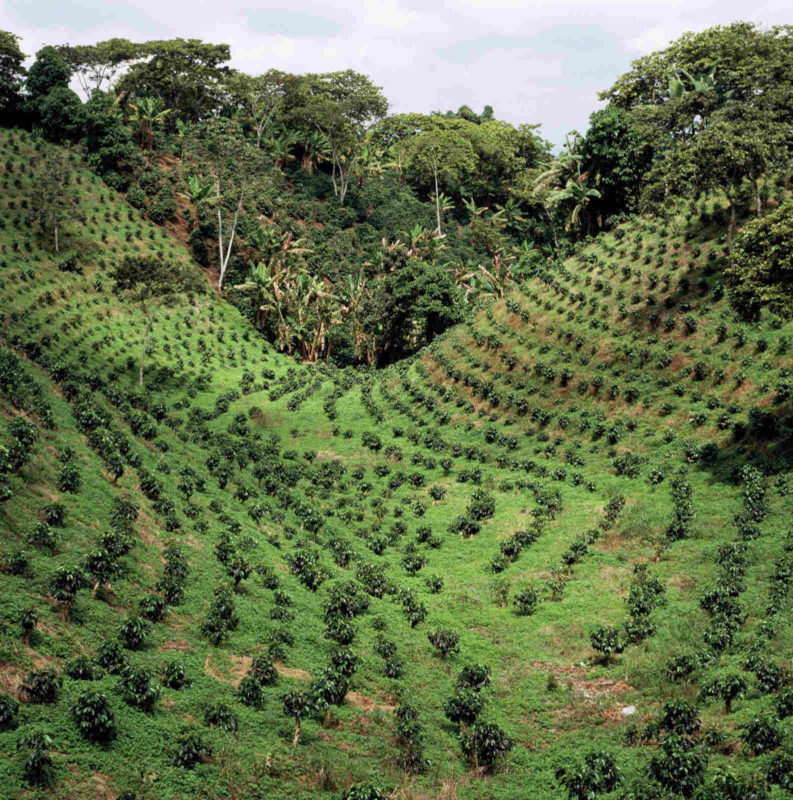Farming of quality coffee is an exact handicraft
The cultivation of specialty coffees is essentially different than the bulk coffee farming. Everything from choosing the coffee variety and habitat is done differently when aiming for maximum quality. The farming of high quality coffee requires a lot of human work, which is also reflected in the price.

Coffee plantations on mountainsides. Trees for shade are scattered around for protection from the sun.
Optimal growth conditions
The habitat is the main maker of coffee quality. The rule of thumb with coffee farming is, that the higher the coffee has grown, the better the flavor is. Low growing coffees are often down-to earth, simple and spicy, while the high growing ones are more chocolate-y, berry-like and multi-dimensional in flavor.
The soil affects the maturing of the coffee berry. The coffee plant takes water and nutrients from the ground in the same way as wine does. However, fertilized or otherwise nutrient-full soil won’t necessarily produce the best flavor. The harder the coffee needs to work to grow, the more flavor packs into the berries and beans.
A Reasonable amount of light is necessary for the production of the most delicious coffee. The best coffees are grown high from the sea-level and in the shade. Direct sunlight makes the coffee berries mature too fast. The best flavors build up over time.
“No machine can recognize the raw berries from the ripe ones“
Handwork improves quality in coffee farming
Handpicking enables, that only the ripe berries are picked and that the raw ones are left to ripen. The coffee tree is checked every few days until the berries are ripe. No machine can recognize the raw berries from the ripe ones and on high slopes, under trees, using a machine would be impossible. Hand picking the coffee is the rule for smallholders.
Coffee processing has to be started latest on the next day, after picking the berry. The bigger smallholders have their own machines for the processing. However, many of the other smallholders need to deliver the coffee to a washing station. Coffee processing and drying requires a lot of handwork.
The sorting of the coffee beans is the last important stage. After which, the coffee is packed into burlap sacks and sent around the world. The beans are separated both manually and by machine. Often the different sized coffee beans are sorted into smaller batches and the bad beans are removed. The rule is the bigger the bean, the better the flavor.
COMMENT AND SHARE FROM BELOW!
Every step in the process and all the choices of habitat affect the flavor of the coffee. The high growing, high quality coffee varieties usually yield a quarter of the harvest that the productive, cheaper varieties grown in the low-lands do. This also explains the price difference. You can learn more about the specialty coffee here.
Photos: coffee cherries CC FCRebelo, coffee plantation CC INeedCoffee/CoffeeHero.
Learn about the SLURP coffee experienceComments (0)
Leave a reply
You must be logged in to post a comment.




